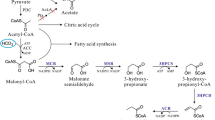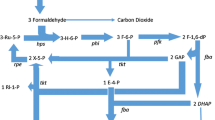Abstract
The effects of adding cellobiose on the transformation of vanillic acid to vanillin by two strains of Pycnoporus cinnabarinus MUCL39532 and MUCL38467 were studied. When maltose was used as the carbon source in the culture medium, very high levels of methoxyhydroquinone were formed from vanillic acid. When cellobiose was used as the carbon source and/or added to the culture medium of P. cinnabarinus strains on day 3 just before vanillic acid was added, it channelled the vanillic acid metabolism via the reductive route leading to vanillin. Adding 3.5 g l−1 cellobiose to 3-day-old maltose cultures of P. cinnabarinus MUCL39532 and 2.5 g l−1 cellobiose to 3-day-old cellobiose cultures of P. cinnabarinus MUCL38467, yielded 510 mg l−1 and 560 mg l−1 vanillin with a molar yield of 50.2 % and 51.7 % respectively. Cellobiose may either have acted as an easily metabolizable carbon source, required for the reductive pathway to occur, or as an inducer of cellobiose:quinone oxidoreductase, which is known to inhibit vanillic acid decarboxylation.
Similar content being viewed by others
Author information
Authors and Affiliations
Additional information
Received: 24 July 1996 / Received revision: 29 November 1996 / Accepted: 29 November 1996
Rights and permissions
About this article
Cite this article
Lesage-Meessen, L., Haon, M., Delattre, M. et al. An attempt to channel the transformation of vanillic acid into vanillin by controlling methoxyhydroquinone formation in Pycnoporus cinnabarinus with cellobiose. Appl Microbiol Biotechnol 47, 393–397 (1997). https://doi.org/10.1007/s002530050946
Issue Date:
DOI: https://doi.org/10.1007/s002530050946




